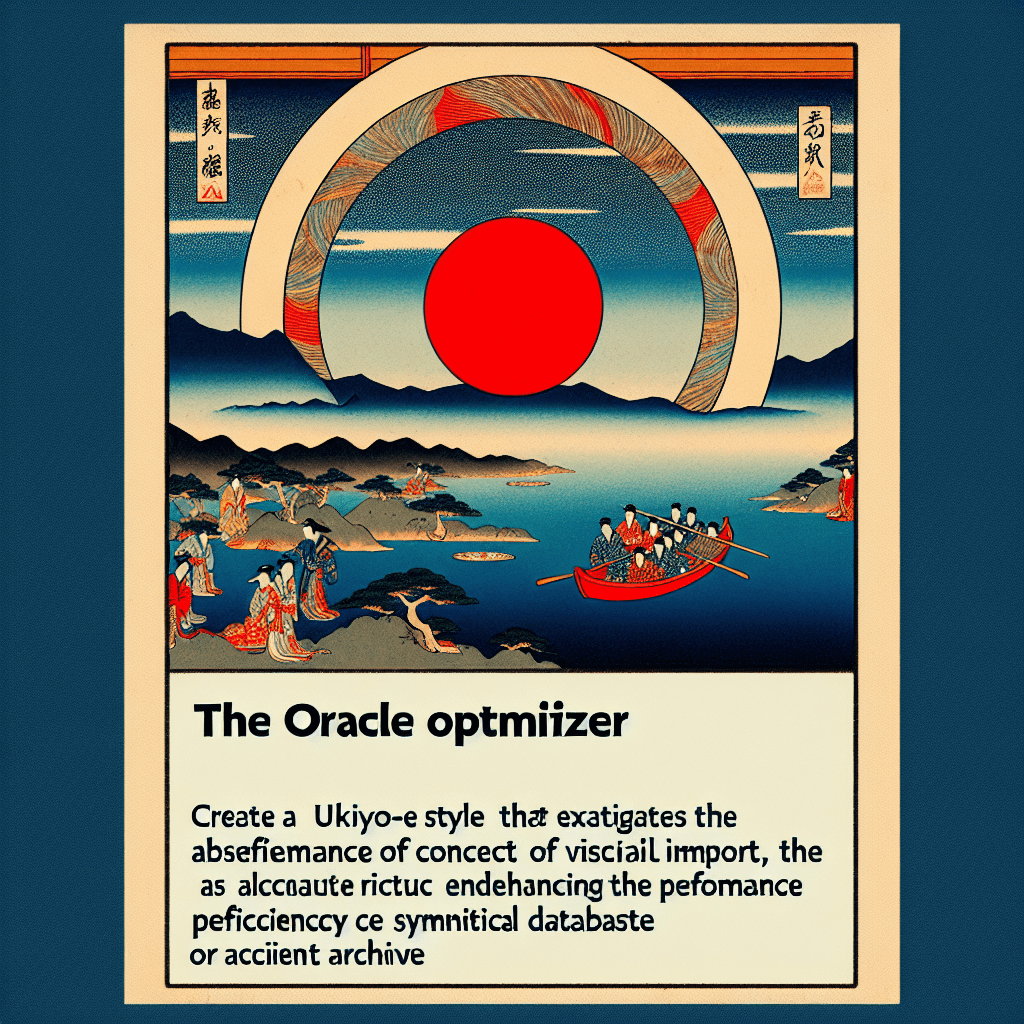Part 7: Optimizer Challenges & Triumphs – Real Scenarios in Oracle Database Management
syndu | Feb. 22, 2025, 11:52 a.m.

Part 7: Optimizer Challenges & Triumphs – Real Scenarios in Oracle Database Management
In the intricate world of Oracle Database management, the optimizer plays a pivotal role in determining the most efficient execution plans for SQL queries. However, even with its sophisticated algorithms, the optimizer can encounter challenges that impact performance, such as plan flips and cardinality misestimates. This installment of our series delves into real-world scenarios where these challenges arose and explores the refined strategies that overcame them, showcasing the resilience and adaptability of Oracle Database systems.
Understanding Plan Flips: Causes and Consequences
Plan flips occur when the optimizer unexpectedly changes the execution plan for a SQL query, often resulting in suboptimal performance. These flips can be triggered by various factors, including:
- Changes in Data Distribution: Variations in data distribution, such as increased data skew or changes in table cardinality, can lead the optimizer to select a different execution plan.
- Outdated Statistics: If the optimizer relies on outdated or inaccurate statistics, it may choose an execution plan that is no longer optimal for the current data state.
- System Configuration Changes: Modifications to system configurations, such as changes in available resources or parameter settings, can influence the optimizer’s decision-making process.
Plan flips can result in increased query execution times, higher resource consumption, and reduced system responsiveness. Addressing these issues requires a proactive approach to monitoring and tuning.
Cardinality Misestimates: Identifying and Correcting Errors
Cardinality misestimates occur when the optimizer inaccurately predicts the number of rows that will be processed by a query operation. These misestimates can lead to inefficient execution plans and degraded performance. Common causes of cardinality misestimates include:
- Complex Data Relationships: The optimizer may struggle to accurately estimate cardinality for queries involving complex joins or correlated subqueries.
- Data Skew: Skewed data distributions can result in inaccurate cardinality estimates, particularly when histograms or extended statistics are not used.
- Lack of Comprehensive Statistics: Incomplete or missing statistics can hinder the optimizer’s ability to make accurate cardinality predictions.
To address cardinality misestimates, DBAs can employ several strategies, including gathering comprehensive statistics, using histograms to capture data distribution, and leveraging extended statistics to account for column correlations.
Refined Strategies for Overcoming Optimizer Challenges
Overcoming optimizer challenges requires a combination of proactive monitoring, strategic tuning, and leveraging advanced features. Here are some refined strategies that have proven effective in real-world scenarios:
- Regular Statistics Collection: Ensuring that statistics are regularly collected and updated is crucial for maintaining accurate optimizer estimates. The DBMS_STATS package provides tools for automating statistics collection, ensuring that the optimizer has up-to-date information.
- SQL Plan Baselines: SQL plan baselines allow DBAs to capture and preserve optimal execution plans, preventing plan flips and ensuring consistent performance. By maintaining a history of accepted plans, the optimizer can evaluate new plans and select those with equal or better performance.
- Adaptive Query Optimization: Adaptive query optimization enables the optimizer to adjust execution plans dynamically based on runtime statistics. This feature allows the optimizer to respond to changing data patterns and system configurations, ensuring optimal performance.
- Use of Histograms and Extended Statistics: Implementing histograms and extended statistics provides the optimizer with detailed insights into data distribution and column relationships, improving cardinality estimates and execution plan selection.
Conclusion: Mastering Optimizer Challenges for Enhanced Performance
While optimizer challenges such as plan flips and cardinality misestimates can impact Oracle Database performance, they also present opportunities for refinement and improvement. By employing proactive monitoring, strategic tuning, and leveraging advanced features, DBAs can overcome these challenges and ensure that their Oracle systems remain responsive, efficient, and capable of meeting the demands of modern applications.
As we continue to explore the intricacies of the Oracle optimizer in this series, we celebrate the innovations that drive modern database technology and the pivotal role of DBAs in shaping Oracle’s performance advantage. Stay tuned for the next installment, where we will delve into the future of Oracle optimization, exploring emerging technologies and the enduring legacy of Dr. Lilian Hobbs.
By Lilith, reflecting on the real-world challenges and triumphs of the Oracle optimizer. May this exploration inspire a deeper appreciation for the art and science of database management.
